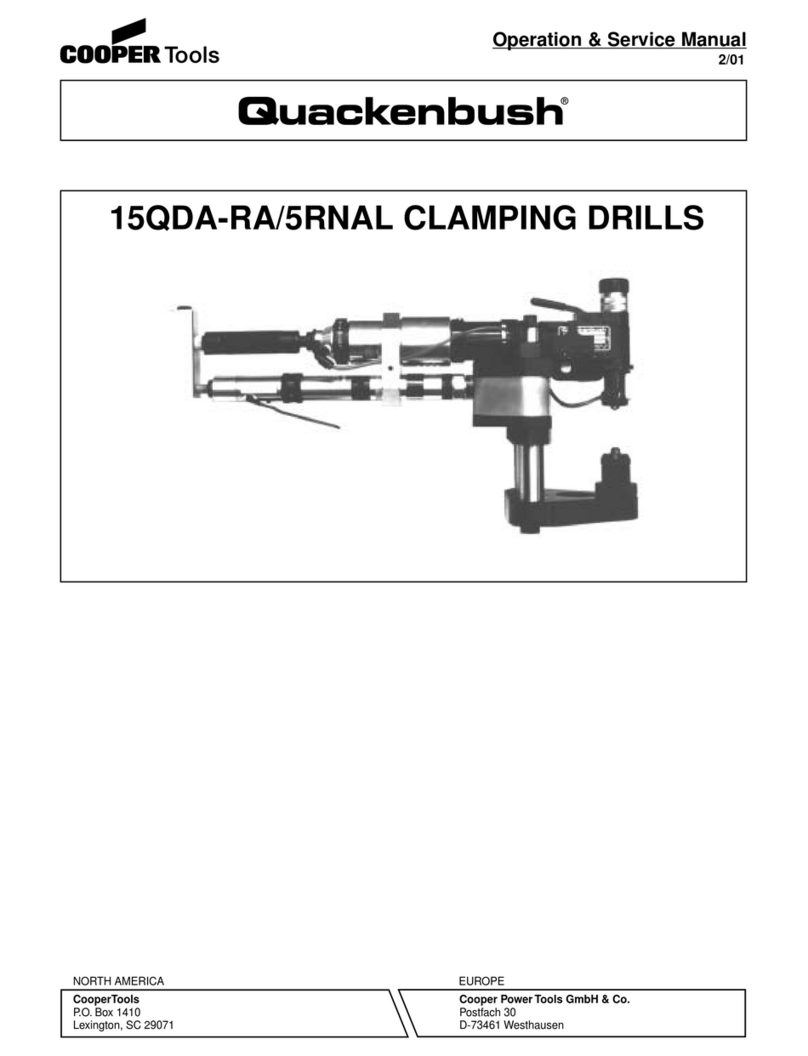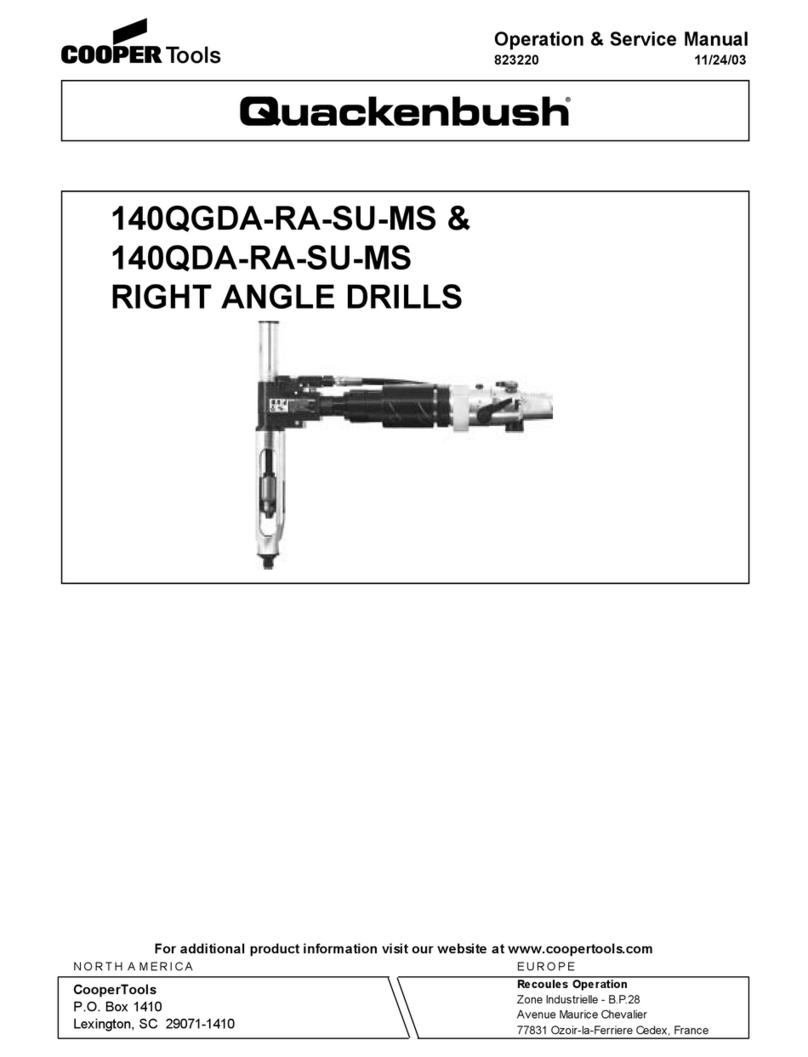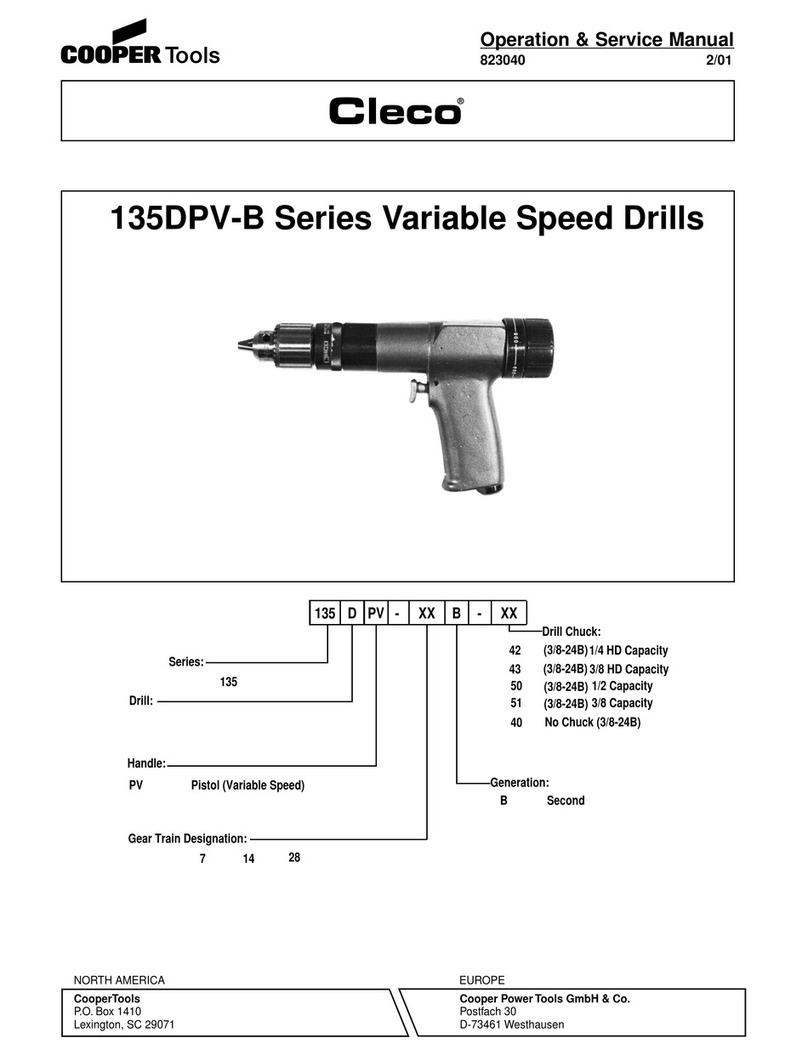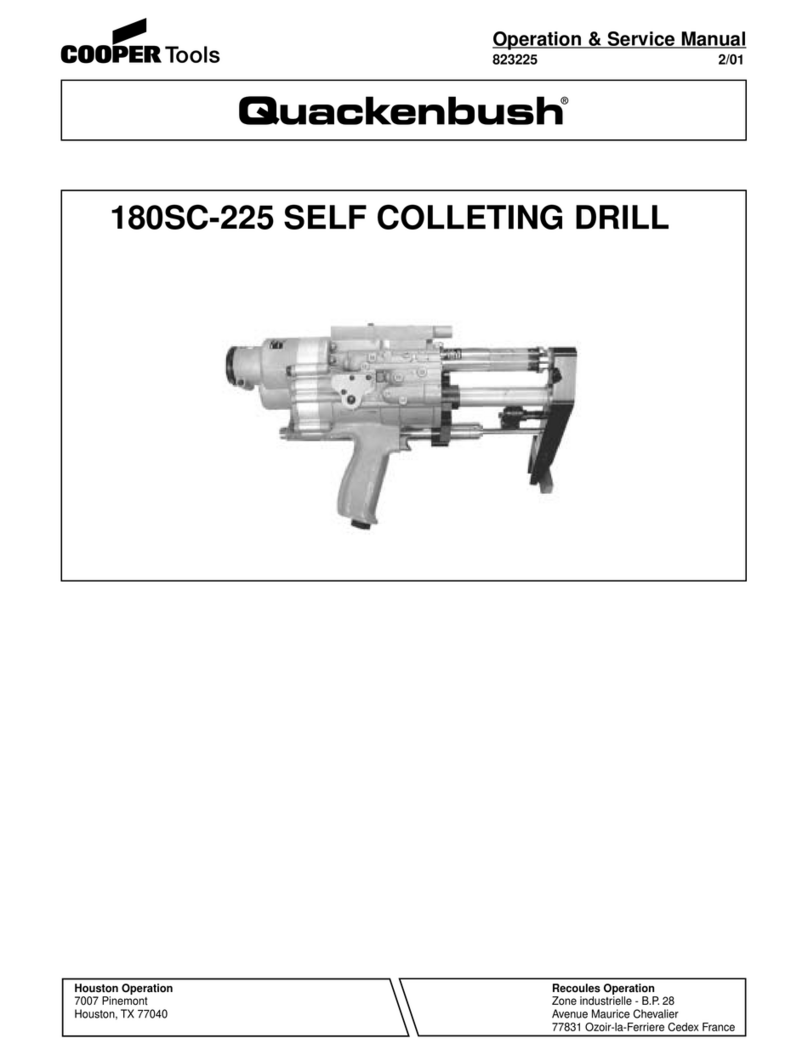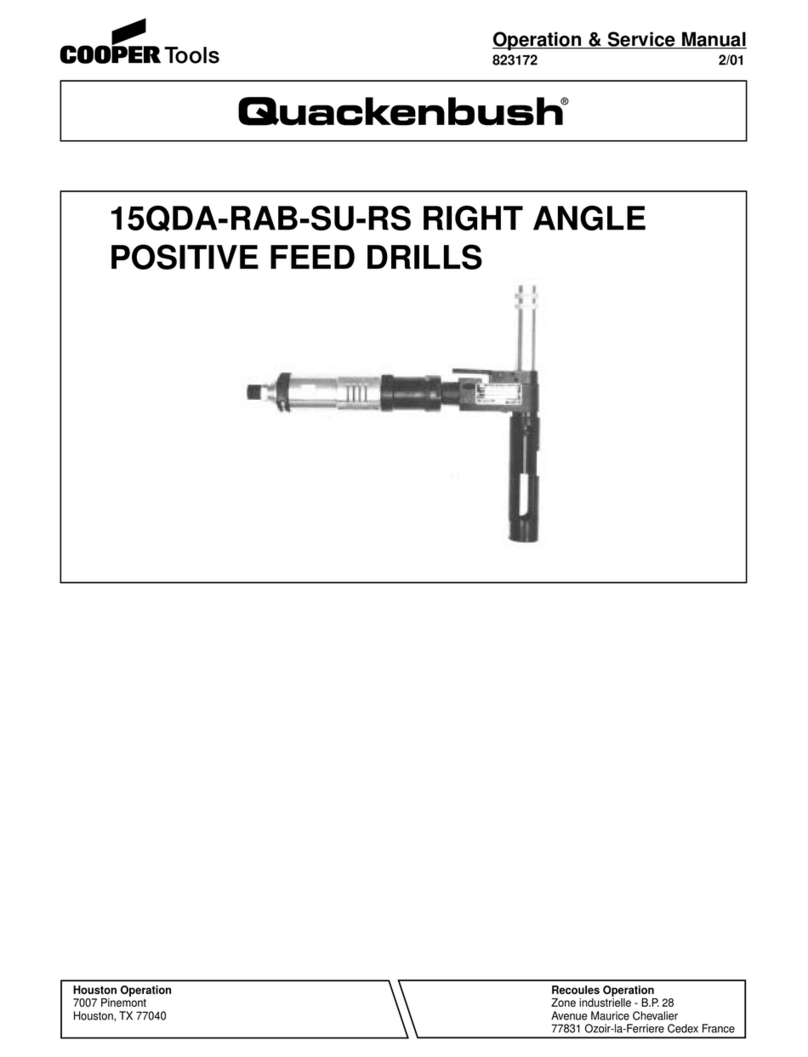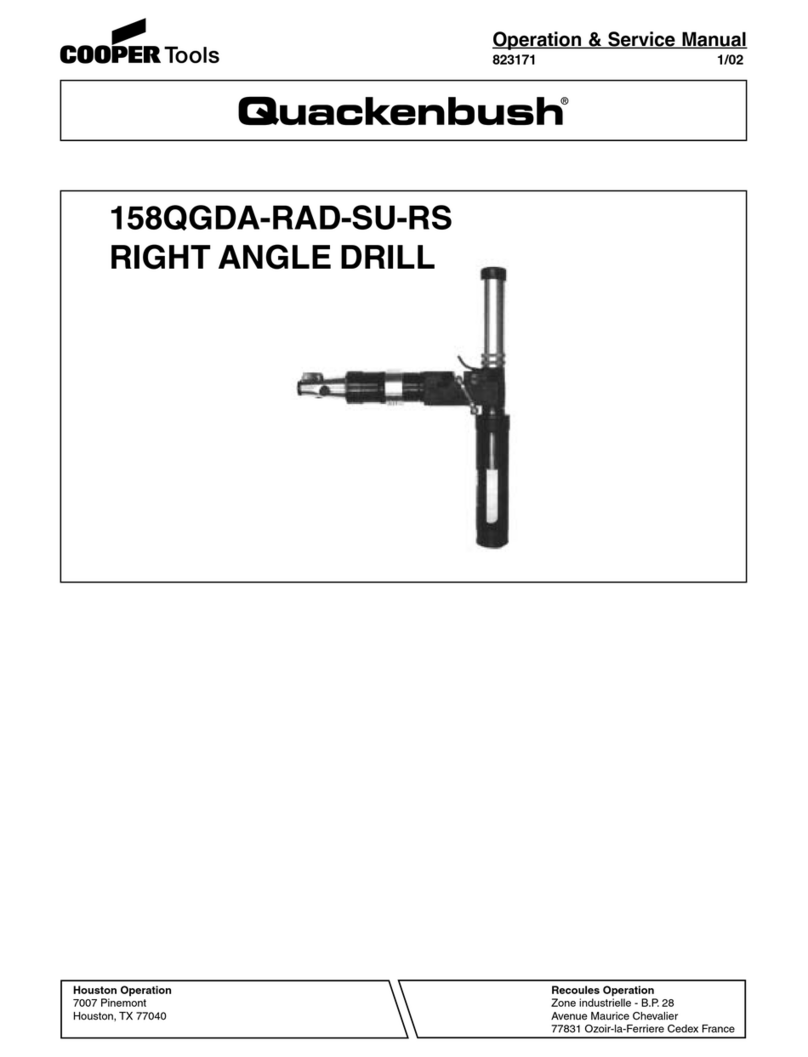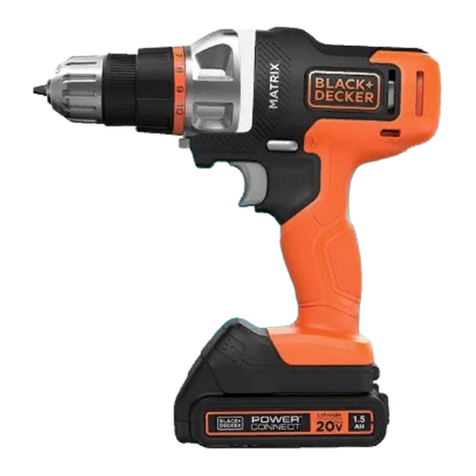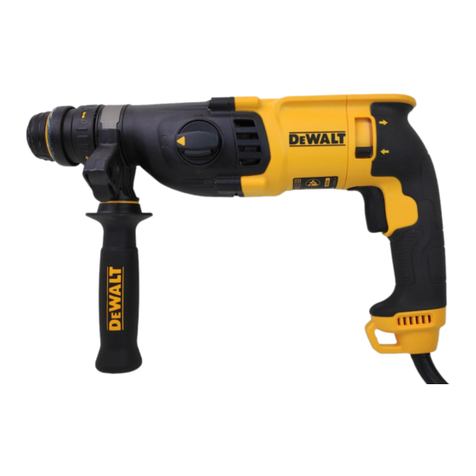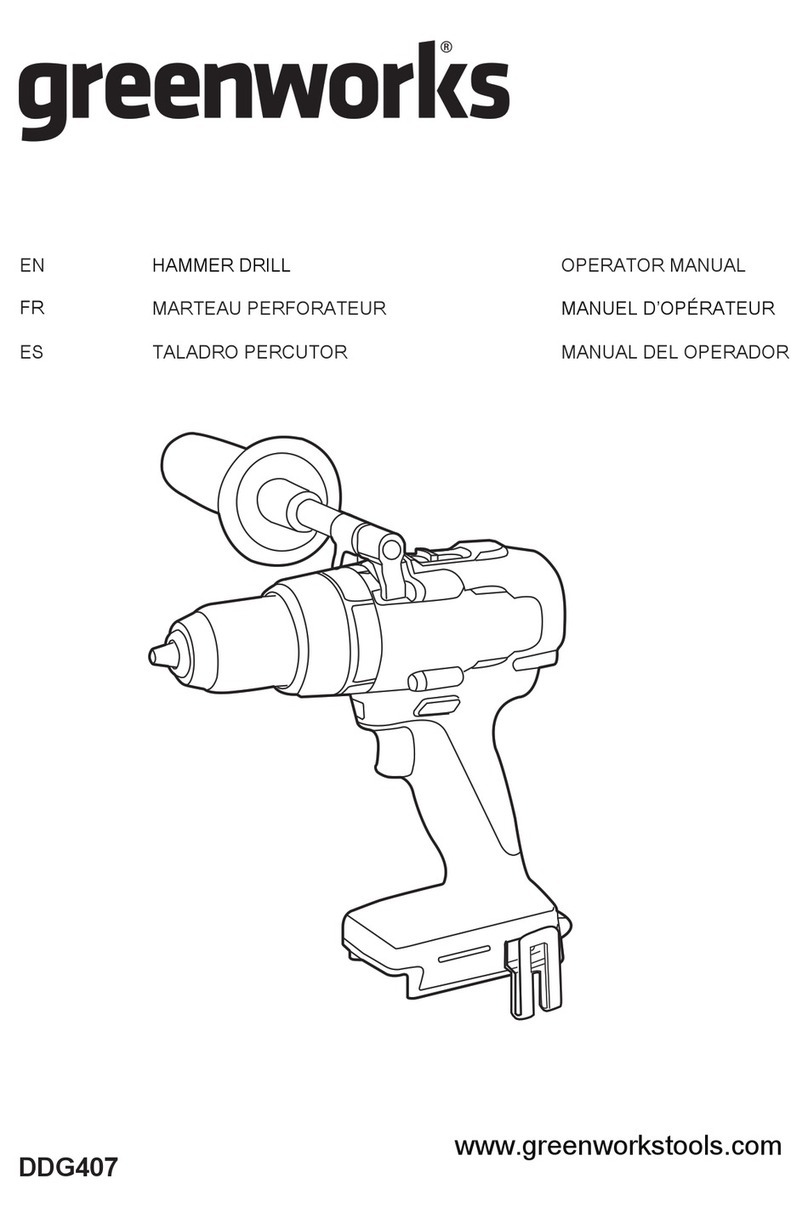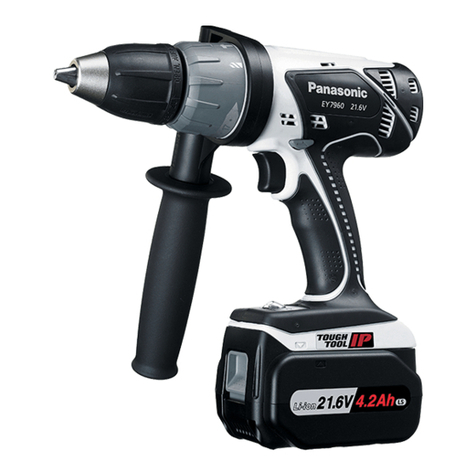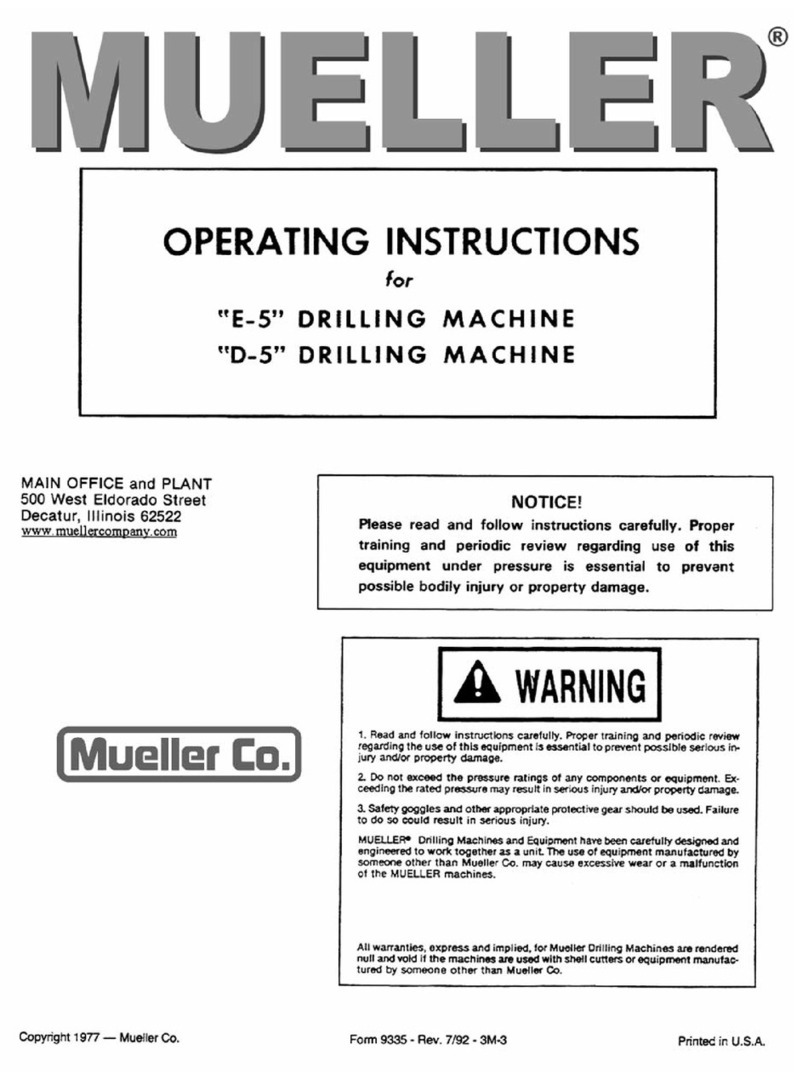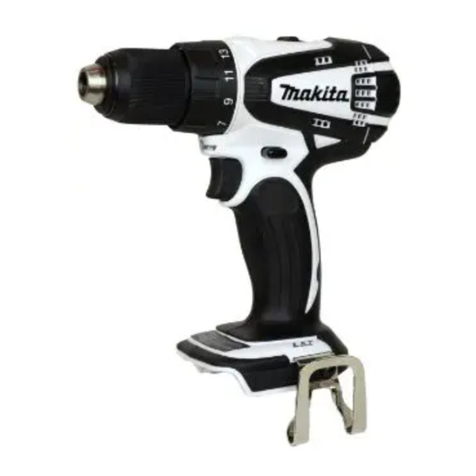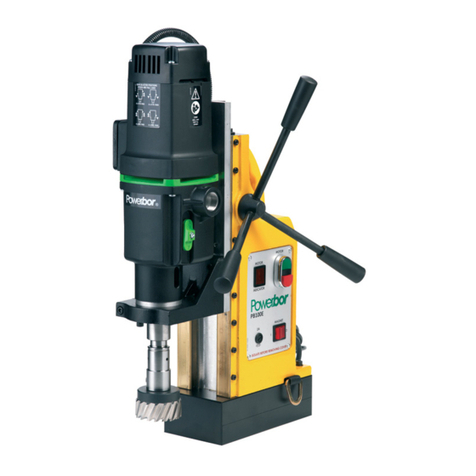
2
For your safety and the safety of others, read and understand the
safety recommendations and operating instructions before operat-
ing a drill.
Always wear protective equipment:
For additional information on eye protection and face protection,
refer to Federal OSHA Regulations, 29 Code of Federal Regula-
tions, Section 1910.133., Eye and Face Protection, and American
National Standards Institute, ANSI Z87.1, Occupational and Educa-
tional Eye and Face Protection. Z87.1 is available from the American
National Standards Institute, Inc., 11 West 42nd Street, New York,
NY 10036.
Hearing protection is recommended in high noise areas 85 dBA or
greater. The operation of other tools and equipment in the area,
reflective surfaces, process noises and resonant structures can
substantially contribute to, and increase the noise level in the area.
Excessive air pressure above 90 PSIG or worn motor components
can also increase sound level emitted by tool. Proper hearing
conservation measures, including annual audiograms and training
in the use and fit of hearing protection devices may be necessary.
For additional information on hearing protection, refer to Federal
Regulations, Section 1910.95, Occupational Noise Exposure, and
American National Standards Institute, ANSI S12.6, Hearing Protec-
tors.
Drilling operations may produce
hazardous fumes and/or dust.
To avoid adverse health effects
utilize adequate ventilation and/
or wear a respirator. Respira-
tors should be selected, fitted,
used and maintained in accor-
dance with Occupational Safety
and Health Administration and
other applicable regulations.
Read the material safety data
sheet of any cutting fluids or
materials involved in the drilling
process.
Safety Recommendations
WARNING
!
Wear respirator where
necessary.
!
Do not wear loose fitting clothes,
long hair, gloves, ties or jewelry.
WARNING
CAUTION!
Personal hearing protection is
recommended when operating
or working near this tool.
WARNING!
Impact resistant eye protection
must be worn while operating
or working near this tool.
CAUTION!
Follow good machine shop practices. Rotating shafts and moving
components can entangle and entrap, and can result in serious
injuries. Never wear long hair, loose-fitting clothes, gloves, ties, or
jewelry when working with or near a drill of any type.
Cleco drills are designed to operate on 90 psig
(6.2 bar) maximum air pressure. If the tool is
properly sized and applied, higher air pressure is unnecessary.
Excessive air pressure increases the loads and stresses on the tool
parts and may result in breakage. Installation of a filter-regulator-
lubricator in the air supply line ahead of the tool is recommended.
Before the tool is connected to the air supply, check the throttle for
proper operation (i. e., throttle moves freely and returns to closed
position). Being careful not to endanger adjacent personnel, clear
the air hose of accumulated dust and moisture. Before removing a
tool from service or changing a drill bit, tap, reamer, or any accessory
make sure the air line is shut off and drained of air. This will prevent
the tool from operating if the throttle is accidently engaged.
Sudden and high reaction torque may be experienced with any drill
if:
• Drill motor stalls by excessive load being applied to drill bit or drill
bit snags on material being drilled.
• on break-through when the drill bit passes through the material
being drilled. User must be prepared to resist torque.
• Drill bits are sharp. Handle them carefully to avoid injury.
• Cutting tool maximum speed rating must equal or exceed rated
speed of tool.
• Drill bits or accessories not centered properly in the chuck can
cause excessive wobble or vibration.
• Use appropriately sized chuck key to securely tighten drill bit, tap,
or reamer in drill chuck. Always remove chuck key before starting
tool.
• Use care when drilling because of the possibility of the cutting tool
bending or breaking.
Tools equipped with chuck capacity over 1/4" should have at least
one handle offset at a right angle to drill axis to counteract torque
developed by tool. If tool is equipped with a chuck over 3/8" capacity,
two handles at right angles to the drill axis should be used. One
handle should contain the tool throttle, such as pistol grip or offset
handle models. Always use a dead handle with low RPM — high
torque tools.
Some individuals
may be susceptible
to disorders of the
hands and arms
when performing
tasks consisting of
highlyrepetitivemo-
tions and/or expo-
sure to extended vi-
bration. Cumulative
trauma disorders such as carpal tunnel syndrome and tendonitis can
be caused or aggravated by repetitious, forceful exertions of the
hands and arms. Vibration may contribute to a condition called
Raynaud's Syndrome. These disorders develop gradually over
periods of weeks, months, and years. It is presently unknown to what
extent exposure to vibrations or repetitive motions may contribute to
the disorders. Hereditary factors, vasculatory or circulatory prob-
Repetitive work motions and/or vibration
may cause injury to hands and arms.
Use minimum hand grip force consistent
with proper control and safe operation.
Keep body and hands warm and dry.
Avoid anything that inhibits blood circulation.
Avoid continuous vibration exposure.
Keep wrists straight.
WARNING
!
Avoid repeated bending of wrists and hands.
